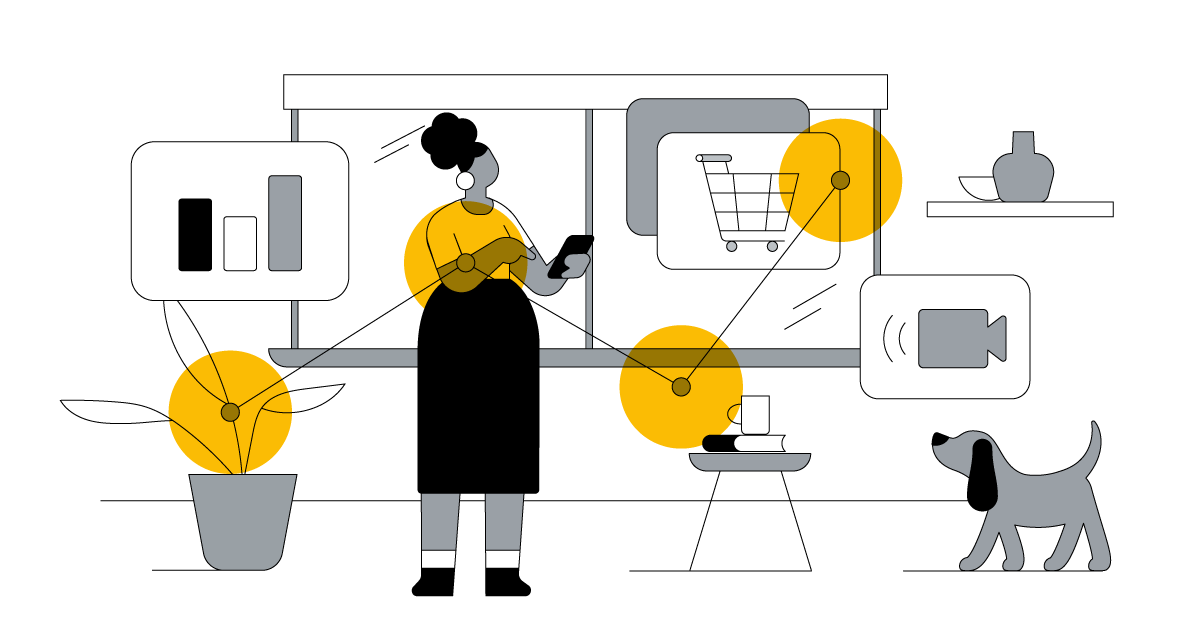We have proof that audience-driven YouTube marketing is more effective than demographic-driven advertising. Here’s why…
Think about the way you use YouTube. It’s probably changed over the years, right? When you visit the platform today, it’s likely that you switch from your mobile to your laptop to your TV, maybe juggling between shows that teach you something and skits that make you laugh. The point is: you choose what you want to watch, and where, based on what you like.
Insights pulled from Google platforms interactions revealed that users' journeys are indeed far more complex than before, partly as a result of cross-channel and multi-platform usage, with over 80% of users bouncing between devices. Just as YouTube users’ viewing habits have changed, our insights suggest that brands also need to adapt. One of the best ways to take the next step after generic demographic targeting is to apply real-people audience targeting.
What’s the difference between demographic targeting and audience targeting?
Demographic targeting encompasses impersonal age and gender-focused advertising, with no ‘face’ fronting the information: think ‘25-year old male’.
Audience targeting, however, focuses on real people with ‘affinities’, or authentic interests and passions. Think people with ‘faces’: the luxury traveller, beauty maven, book lover, fast-food craver. Audience targeting allows you to reach people based on who they are, their interests and habits, what they’re actively researching, or how they have interacted with your business.
Audience targeting, specifically, can boost your campaign's performance by reaching people browsing websites, using apps, or watching videos.
Our insights show that by using ‘advanced audiences’ brands can better:
- Attract (build reach and awareness)
- Connect (nurture consideration and intent)
- Assist (inspire action and loyalty)
1. Attract
When we talk about attract, we talk about homing in on users’ personal interests and passions to build reach and awareness. Understanding what your target market is genuinely passionate about is key here. You need to know what your target market has an affinity for. Is your audience made up of people who frequently visit salons, or are they travel-buff family vacationers, professional chefs, or fashion designers? Once you understand this, you can tailor your campaigns.
During the Attract phase, our insights suggest that the ideal targeting formats encompass:
- Masthead ads (digital billboard ads placed on YouTube’s homepage for 24 hours)
- Google-preferred sponsorship
- Bumpers (six-second YouTube ads)
- TrueView for Reach (short ads with CPM buying)
- Pre-roll (in-stream) ads
Effective displays include:
- Out-stream video ads (based on CPM)
- Responsive display ads (asset-based ads that automatically adjust their size, appearance, and format to fit available ad spaces)
What brand impact can you expect when you switch to audience targeting?
Coca-Cola, for example, was able to drive sales lift for Minute Maid in convenience stores using TrueView ads paired with affinities. This generated a 3x increase in sales lift compared to demographic targeting.
2. Connect
When we talk about Connect, we focus on a user’s intent to influence their consideration. For this, we use in-market audiences, those people who are already actively browsing, researching or comparing products and services across the Google Display Network (GDN), partner sites and YouTube. For instance, if we know the travel buff family vacationers are looking for air tickets and hotels, we might be able to help point them towards your boutique hotel. Or, if we know the bargain hunter is searching for second-hand books, we can direct them to your online bookstore.
During the Connect phase, our insights suggest that the ideal targeting formats encompass:
- TrueView in Stream ads (run-on videos served on YouTube or on a collection of sites and apps in GDN)
- TrueView for Action ads (featuring prominent calls to action and headline text overlays)
- TrueView Discovery ads (run on YouTube search results and watch pages for desktop and mobile)
Effective displays include:
- Responsive Display ads (asset-based ads that automatically adjust their size, appearance, and format to fit available ad spaces)
- Gmail ads
- Lightbox ads (automatically adapt to fit ad spaces across GDN)
What brand impact can you expect when you switch to audience targeting?
Renault Turkey used in-market audiences to grow its test drives, resulting in a 4.5x increase in its test-drive request rate.
3.Assist
When it comes to Assist, brands can respond to users who have shown intent for their brand and categorise them through hyper-targeted audiences and action ad formats. Remarketing (retargeting people who have checked out your brand) is big in this phase. For example, if someone has watched your make-up tutorial, you might be able to remarket to them to buy the same produce in different shades. People who were looking for a specific route on your travel site could be retargeted to buy business-class tickets.
During the Assist phase, our insights suggest that the ideal targeting formats encompass:
- TrueView for Action ads (featuring prominent calls to action and headline text overlays)
- TrueView for Shopping ads (interactive ads that connect viewers to brands’ products and provide information that brings customers closer to making a purchase)
- Bumpers for Action ads (six-second ads with calls to action)
Effective displays include:
- Responsive display ads (asset-based ads that automatically adjust their size, appearance, and format to fit available ad spaces)
- Dynamic responsive display ads (these allow a website to dynamically display ads to users based on products they have previously browsed on the website, or based on the content on websites)
- Gmail ads
What brand impact can you expect when you switch to audience targeting?
By combining Remarketing List with Search Ads (RLSA), Starwood Hotels was able to customise search ads for users that previously visited their websites, increasing click-through rate (CTR) and conversions.
In conclusion: it’s time to make a move
The data is clear: leaving demographic targeting and going towards audience targeting benefits not only customers but brands themselves, resulting in increased views, engagement and sales.








